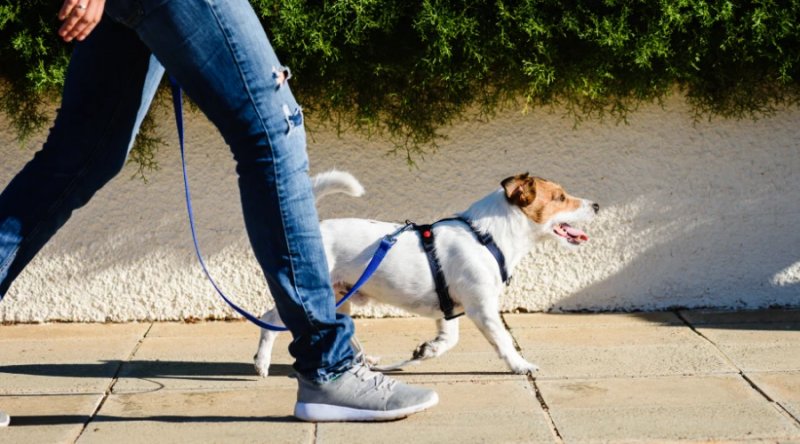
These days, you will come across a lot of dogs on the roads with harnesses instead of leashes connected to collars. It is pertinent to ask whether harnesses are safer than collars for dogs or not. Is it okay to abandon the traditional collar of your dog altogether? Should you use harnesses for training your dog?
Before explaining why harnesses for dogs are good for training, let us first understand what it is:
Dog harnesses
These harnesses come in a large variety of sizes as compared to callers. Thus, you may get more choices for your extra-large or tiny dog quite easily. The best part is even if the harness gets caught on something, there is no danger of your furry friend getting hanged accidentally.
Originally, harnesses were usually used in the world of sled dogs. However, their popularity had gone up by leaps and bounds in recent years.
Why use harnesses for training your furry buddy?
Harnesses are soft and gentle on the body of your dog. Using these can prevent the neck of your dog from getting damaged accidentally as mentioned before. They offer so many advantages that make them perfect for training your dogs.
A harness is an excellent training tool for your puppy if you want it to learn how to behave on a leash. Harnesses also enable walkers to have more control. It also discourages pulling while also permitting you to stop the dog from prowling upon strangers. You do not even have to worry about it getting choked.
If you have a delicate toy breed, a harness can lower the possibility of neck injury. Harnesses cause less restriction for French Bulldogs and Pugs. These breeds are susceptible to tracheal collapse or respiratory issues.
Does your pup have any trouble with breathing? You can close your eyes and get a harness in such a case.
Types of harnesses
A harness can be either of these two types – front-attaching or back-attaching.
- Front-attaching harnesses: The harness is ideal if you have a large dog because it leads from the front.
- Back-attaching harness: On the other hand, a back-attaching harness does not permit the walkers to have a great deal of control. These harnesses may result in worse pulling behavior. That is because the dog might feel the necessity of the guidelines for training.
A back-attaching harness is ideal for tiny breeds because they are quite sensitive to pressure. Also, a front-attaching harness may be painful for these small breeds.
Final words
In fact, a dog should have a harness, as well as a collar for effective training. A harness keeps your furry companion safely connected to you and eliminates pressure on their neck. It is difficult for your dog to escape if it is wearing a harness. It also increases the control of the walker over the direction in which the dog moves.
You should take off the harness and the collar while your dog plays solo in the backyard or with other dogs. While a harness may not strangle your furry companion, it can entangle the playmate of your dog or catch on objects.
